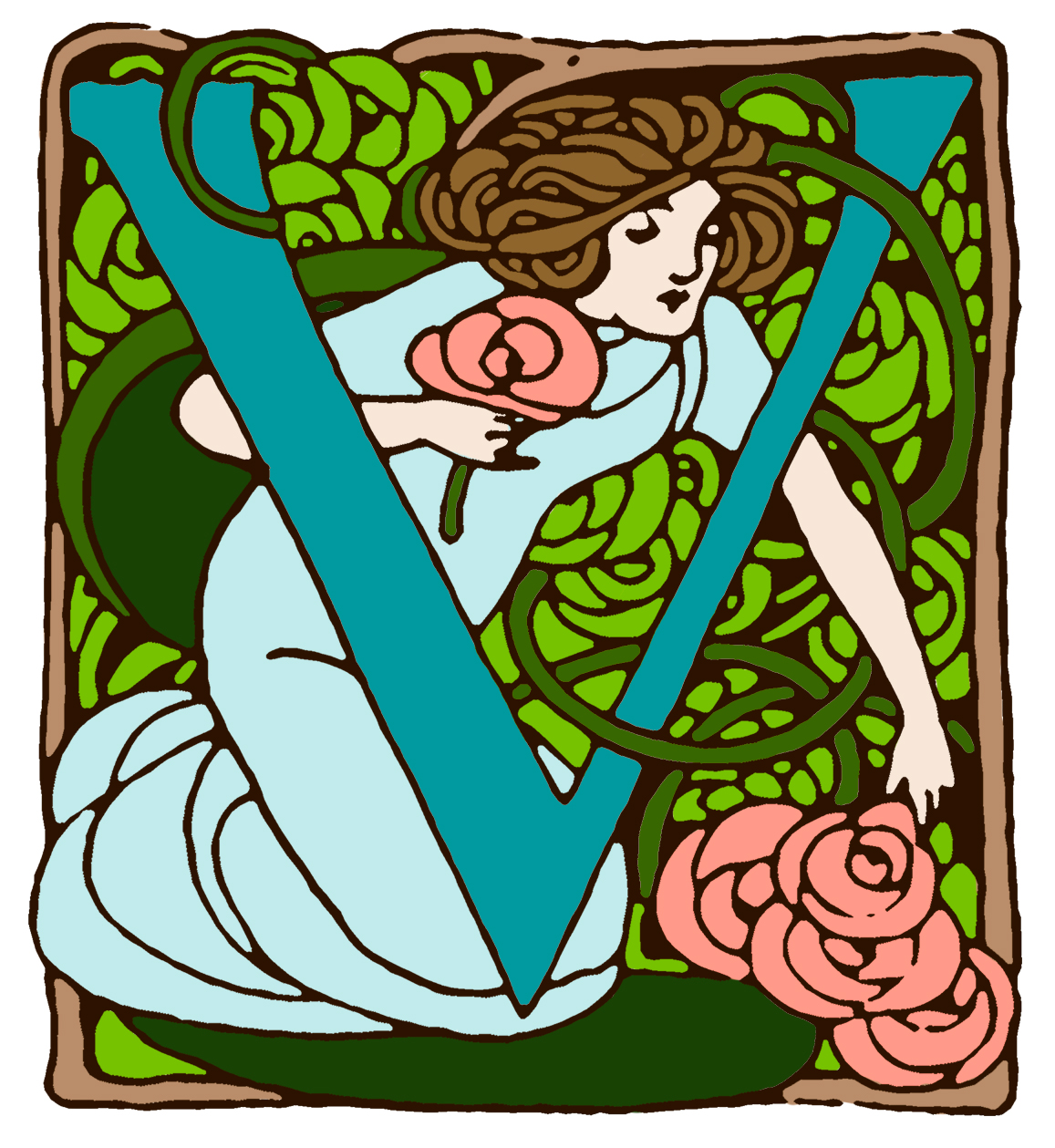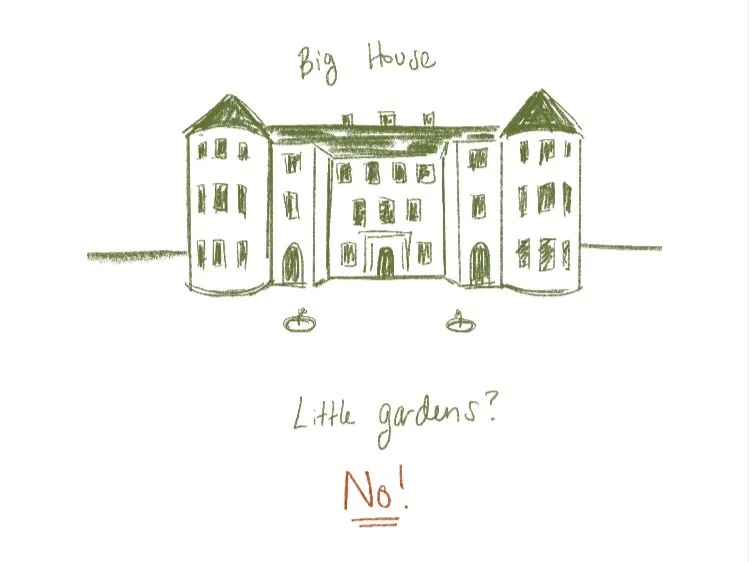Thank you for subscribing!
During the gardening season we send out gardening tips, timely garden chore reminders, plant profiles, garden design inspiration, and How-tos.
Here is your copy of The 3 Biggest Mistakes in the Garden: Mistakes people make in the garden (and how to avoid them!) Download it here or read it below:
The 3 Biggest Mistakes in the Garden
Mistakes people make in the garden (and how to avoid them!)
Mistake #1.
FLAT GARDEN BED
Mistake #2.
USING LANDSCAPE CLOTH
Mistake #3.
THE POLKA DOT GARDEN
Mistake #1.
THE FLAT EARTH GARDENING METHOD
No matter where your garden is located and no matter what you have planted, you want to have soil that is both moist and drains well. To achieve this perfect balance, we need a garden bed that rises at least 5 or 6 inches above lawn level. When I see flat gardens with soil the same level as the lawn, I usually see struggling plants.
So in landscaping terms, when we install the garden, the first thing we do is “build a bed.” (And imagine a soft, fluffy bed! A pillow-top of soil is what we’re going for.)
How to avoid this problem?
Build a proper garden bed:
1. Curved edges
2. Appropriate scale
3. Layout the shape
4. Cut a garden edge
5. Smoother remaining grass with good soil
6. A note on overhangs
1. Lay out soft curves when designing a garden bed, the purpose of the gardens are to soften the architecture into the landscape, not reflect the straight lines and sharp corners of the architecture. The garden design should be soothing, calming, and welcoming. The garden edge should also be easy to maintain when you mow the lawn! If you do it yourself or if you have a lawn service, you will save heartache and money if the garden edge can be easily mowed. (That means no super tight concave curves or grass pathways too narrow for the mower.) Think soft, sweeping curves and meandering paths.
2. Consider the scale of the garden in relation to the scale of the house. You don’t want a dinky little garden in front of a seven bedroom house that’s going to look silly. (However, if you have a small house on a small piece of land, you can get rid of the lawn entirely and make what was the whole front yard garden. Aesthetically that’s very easy to create and be very visually striking.)
3. We lay out the shape of the garden with marker paint and we usually spray a curved edge or a kidney-shape right on the grass. (There is rarely a reason to use perfect circle or straight lines in the garden design! We want natural organic shapes.) With the marker paint you can really see what the garden will look like before you cut out any grass and the marker paint washes away after it rains.
4. What is “cutting an edge?”
Using a tool called…wait for it…an edge cutter! You will cut a line in the grass and pull away the sod and soil 2 to 5 inches below lawn level. To visualize think of the lawn level, at the garden edge, it dips down 2 to 5 inches (90 degrees perpendicular) and then the garden bed rises up at least 5 to 6 inches above lawn level.
We cut the edge, perfect the shape, and the pull the sod about a foot into the garden. (Pulling sod is a terrible job! So only do the edge.) Throw the sod clumps into the center of the bed.
5. Finally, bring in quality top soil and pile it at least 5 to 6 inches high inside the edges of your new garden. The soil will smother the grass and give you nice drainage for your new plants!
Be sure to get quality top soil! The danger for cheap fly-by-night “fill” from “some guy” is it could be filled with weeds or even invasive plants that you will spend years battling in your brand new garden. But even beyond weeds, the soil could be contaminated with anything from petroleum to construction waste to something toxic or carcinogenic.
Homeowners in the area will have to pay fines as well as pay to have their property remediated after they used cheap loads of dirt laced with illegal demolition and construction material. https://www.dailyfreeman.com/2023/03/30/state-sues-29-haulers-for-illegally-dumping-waste-at-karolys-saugerties-site-officials-say/
You don’t want to endanger your new plants, your health, or your well water!
Brian Bell of Bell’s Topsoil gives advice on the best soils for gardens and plantings:
“Because more people are concerned and interested in where their food comes from, starting your own home garden is a great way to become self-sufficient. Many properties in this area don’t have the best soil. It certainly helps to compost as much as possible and add to whatever soil is already there; but at times the soil is so poor to begin with, or has more stones than actual soil, that ordering garden soil that’s ready for planting is the way to go. Then down the road the composting that you do will maintain its fertileness for years to come. Our garden soil is rich in organics, with a neutral pH that’s ready for planting veggie and flower gardens and trees and shrubs. If you already have a garden it’s best to add composted cow manure. And for lawn seeding—it’s best, and more affordable, to order a large amount of special lawn soil.” 622 Mettacahonts Road, Accord. 845-626-0055
6. A note about overhangs:
When you are planting up against your house or garage or garden shed (what we call a foundation planting) nothing will grow under the overhang of your roof! No moisture will get to that section of your garden. Sometimes people will try to use drip irrigation in those areas, but not only do you not want water up against your foundation, but you cannot run that irrigation in January and February. Despite going dormant in the winter, all plants are still active in their root system and still need moisture.
What we like to do under the overhang next to the foundation is an edge of river stones the same width of the overhang. The river stones look neat and tidy, prevent mud from splashing up against your house, and help to keep the mulch in the garden bed.
Under these river stones and under pea gravel walkways are the ONLY places we use landscape cloth.
Mistake #2.
USING LANDSCAPE CLOTH
The first thing about landscape cloth, is it doesn’t work the way it promises to! You put it down in your garden and then put mulch on top, the mulch breaks down and turns into rich soil, and then weeds grow on top of the landscape cloth!
The cloth is not as "permeable" as it should be and it doesn’t allow water to flow naturally. The water pools and runs in strange patterns instead of evenly seeping through the soil.
The plastic heats up the temperature of the soil and kills the microorganisms, which starves the soil below it of nutrients.
When we are rehabbing a garden that has had landscape cloth on top of it, the top layer of decomposed old mulch is fluffy and light and full of worms. But below the cloth, the soil is not aerated, there are no worms, no bugs, and it’s usually a hard and crusty texture—not the signs of healthy soil!
Also, people will cut a small hole in the cloth to plant a plant, but as that plant grows the hole, becomes too small and chokes the plants.
Use cardboard to deal with pervasive weeds.
We often use cardboard with invasive weeds like thistle, Japanese knotweed, and mugwort. It may take two or three seasons, to completely eliminate the invasive, but it’s better for your garden and your plants in the long run. And again, landscape cloth will not work on those invasives. They will simply grow up through the holes and be even harder to remove.
A rant about landscape cloth:
Oh how we HATE landscape cloth!
We hate it so much we’ve ranted about it before here: https://www.victoriagardens.biz/articles/2020/8/14/landscape-cloth-a-rant?rq=rant
Mistake #3.
THE POLKA DOT GARDEN
The third biggest mistake people make in the garden is just buying one of each plant. The effect of this purchasing pattern is one plant here one plant there creating a polkadot effect.
When you are starting a new garden, buy three of each plant. This is one of the hardest things to convince new gardeners to do. Because everyone comes to the garden center with a budget.
But this is the most important advice I can give as a professional to home gardeners. Your garden will be more successful, more beautiful, more striking, and more professional, looking, if you plant in groupings. We like three or five or seven of the same plant, depending on the scale of the garden
From a design perspective, again the garden should be soothing and calming and welcoming, and a group of the same plant creates a visual resting spot.
Whereas in a polkadot garden, your eye is bouncing from plant to different plants with no focal point and nowhere to rest.
At Victoria Gardens, we arrange our nursery in plant groupings. You can walk around the nursery and see plant combinations that work—complimentary textures and colors, but also repetition and masses of one variety.
Gardening has enough challenges without making these three big mistakes!
Avoiding them will bring you pleasure in your garden for years to come.
At Victoria Gardens we divide up our nursery according to where the plant will go in your garden. If you have a garden that is in full sun, you won’t accidentally fall in love with a plant that needs shade!
You can look at the flowers, colors, and textures instead of squinting at the tags, trying to figure out if it will survive in your garden. If you are browsing in the right section at Victoria Gardens, it will survive and thrive!
After 30 years of field testing varieties, we know what works.
Victoria Gardens is located at 1 Cottekill Road, Rosendale, NY on the corner of Rt 213 and Cottekill Road between High Falls and Rosendale. We are a fully stocked plant nursery, garden center, and garden gift shop.
www.victoriagardens.biz





